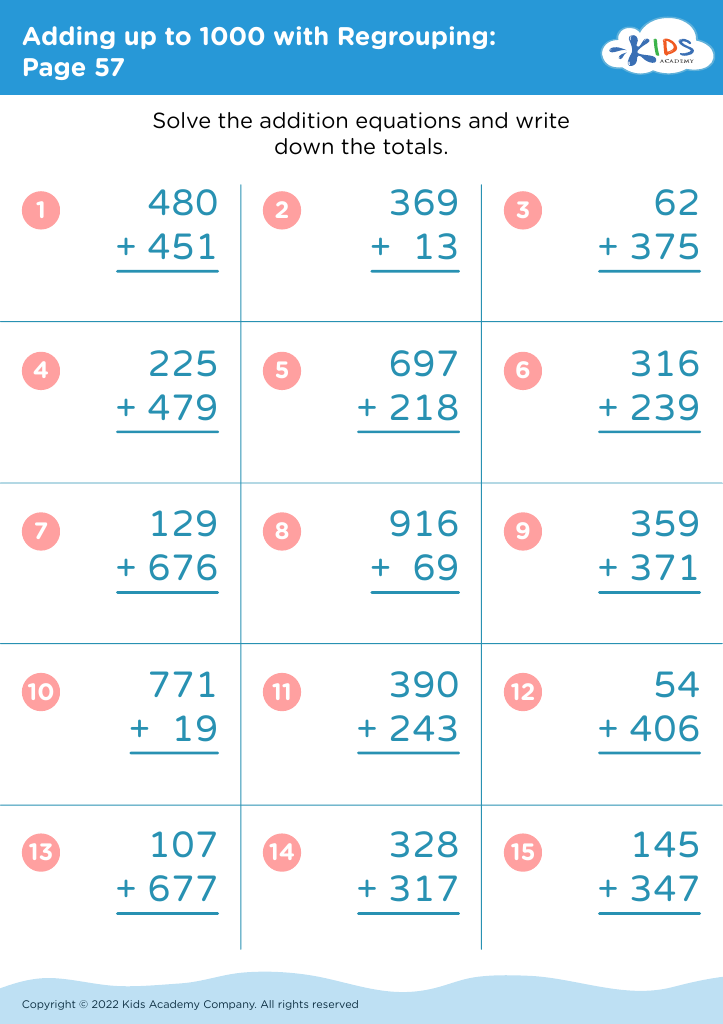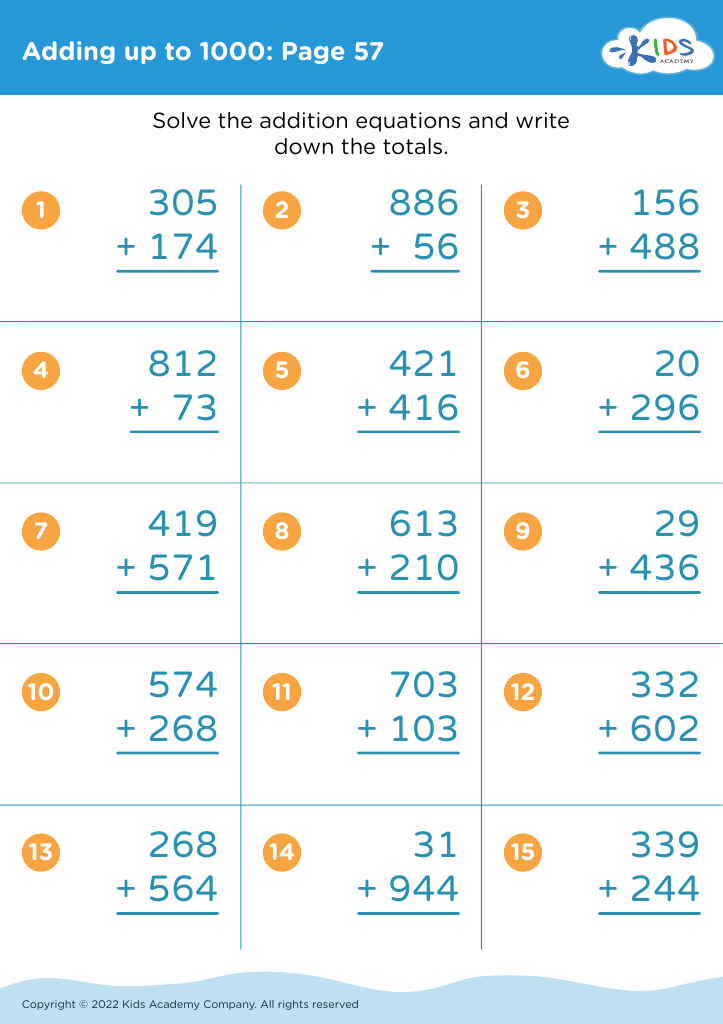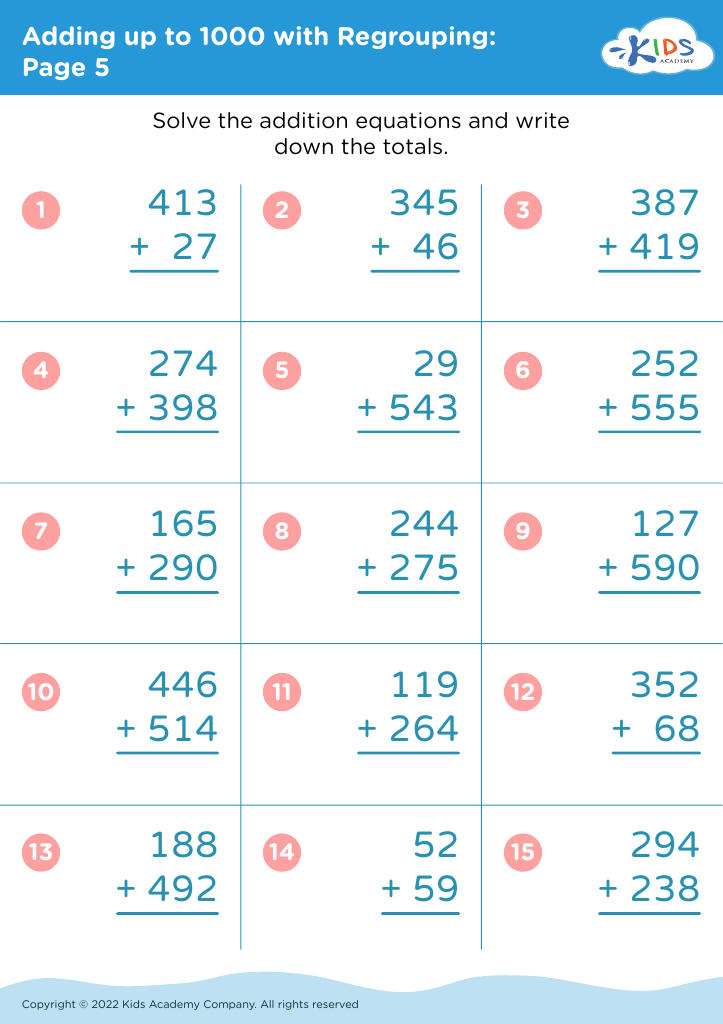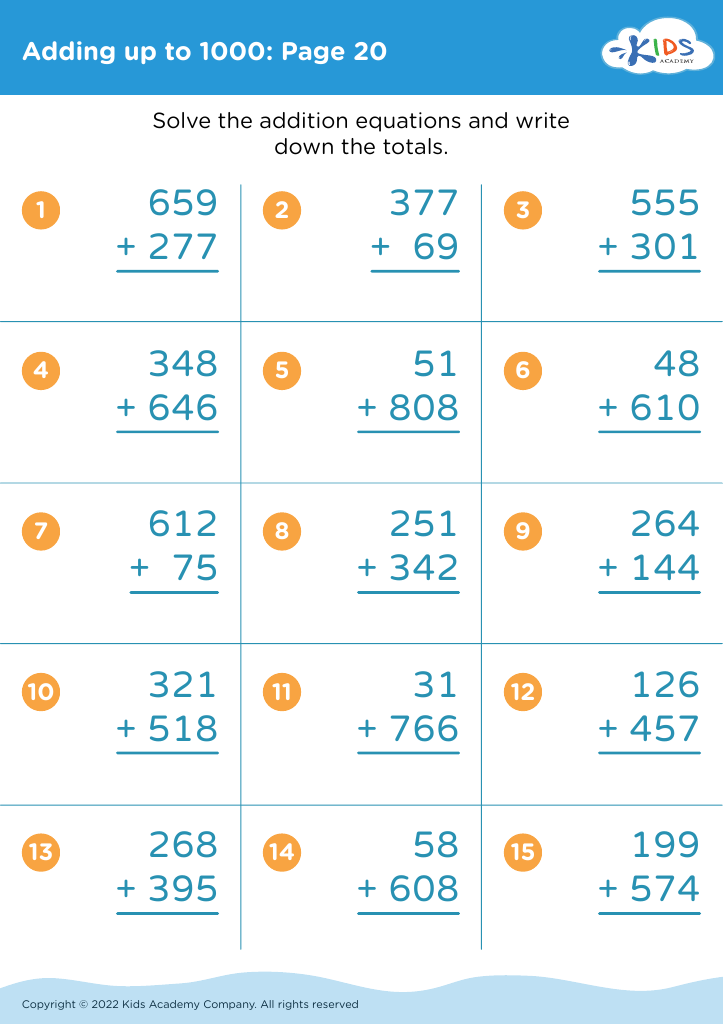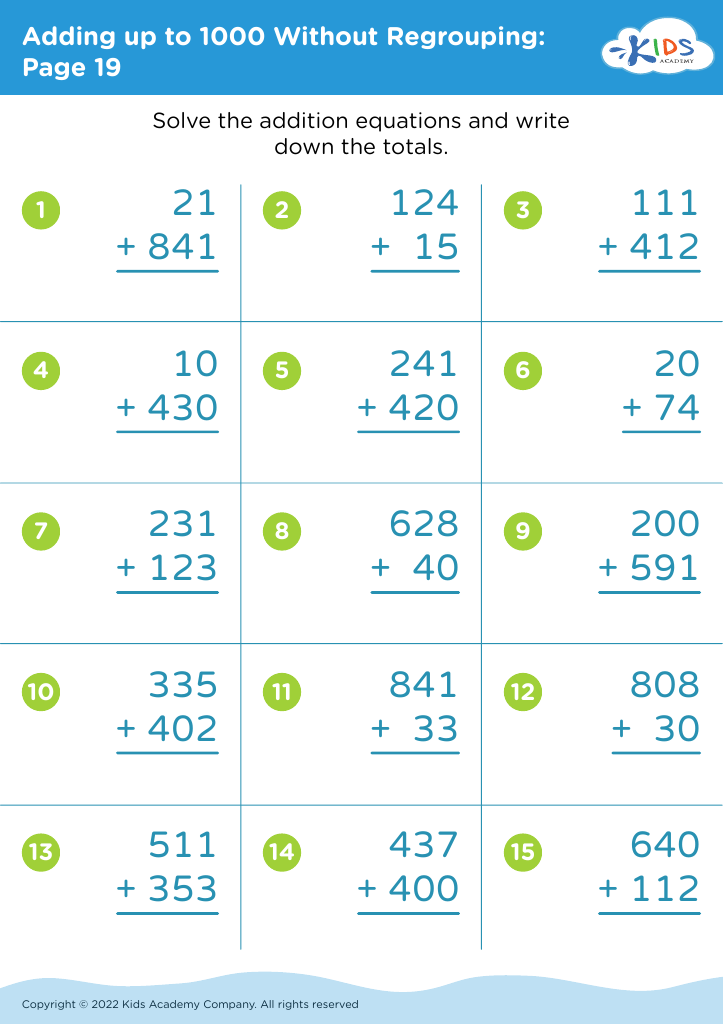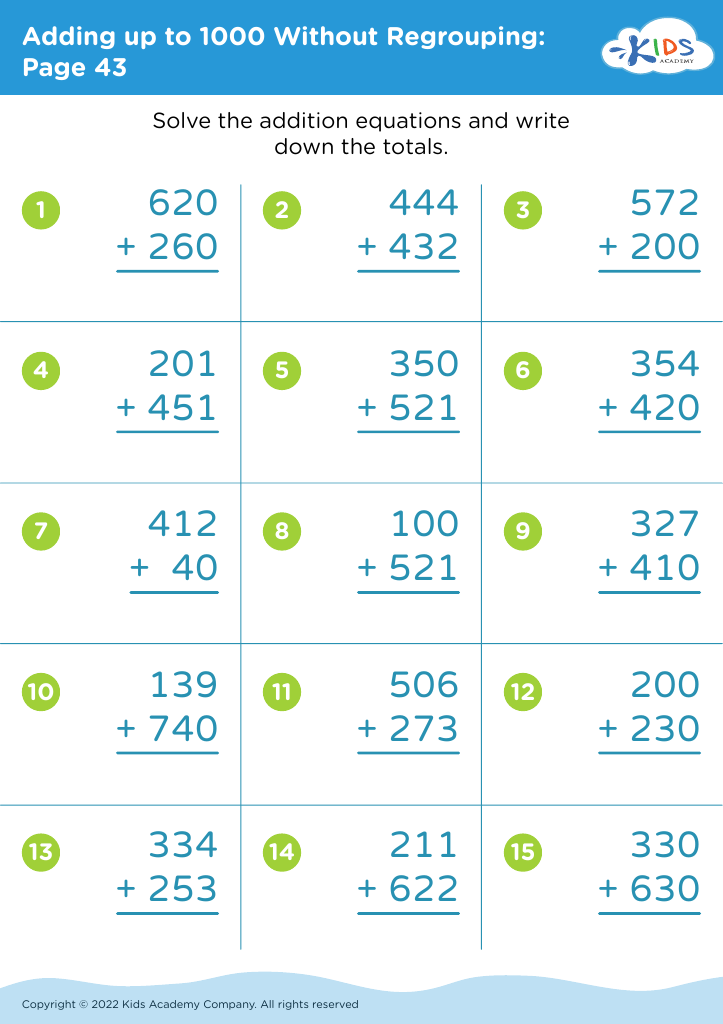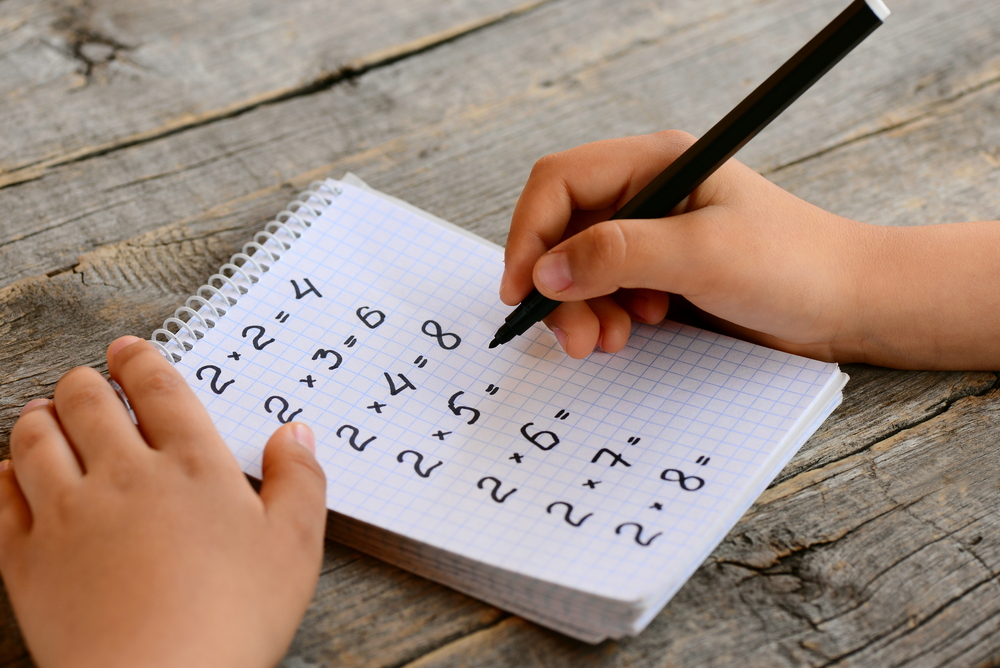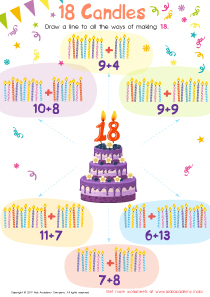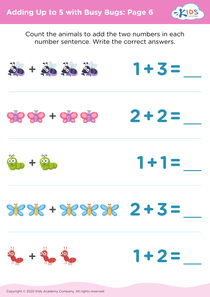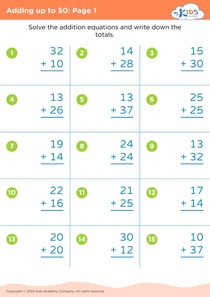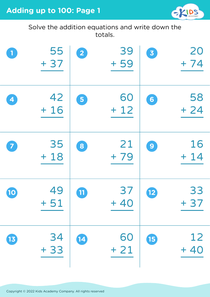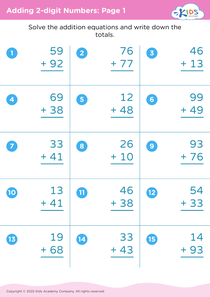Shape identification Adding up to 1000 Worksheets for Ages 8-9
6 filtered results
-
From - To
Our "Shape Identification Adding up to 1000 Worksheets" for ages 8-9 combine essential math and geometry skills in one engaging package. These worksheets enhance your child's ability to recognize and identify shapes while practising addition up to 1000, making learning fun and interactive. Designed to boost problem-solving and critical thinking, these activities offer a blend of visual and numerical challenges. Perfect for in-classroom learning or at-home practice, each worksheet enriches your child's educational journey, promoting both mathematical dexterity and geometrical understanding. Foster a love for learning today with our expertly crafted resources!
Parents and teachers should prioritize shape identification and adding up to 1000 for children aged 8-9 due to their holistic benefits in cognitive and academic development. Shape identification enhances spatial awareness and visual processing skills, essential for comprehending more complex concepts in geometry, art, and everyday tasks requiring spatial orientation. It is foundational for recognizing patterns, increasing problem-solving abilities, and creating a robust base for advanced mathematics.
Similarly, skills involved in adding up to 1000 are critical at this age as children transition from basic arithmetic to more sophisticated math. Mastering large numbers reinforces their understanding of place value, numeracy, and arithmetical operations like carrying and borrowing. These skills are vital for tackling more advanced math concepts later in life, such as fractions and algebra. Furthermore, proficiency in addition promotes logical reasoning and critical thinking, aiding academic success across subjects.
Both shape identification and adding up to 1000 inclusively support a child's overall mathematical literacy. They empower children with the confidence and capability to engage in everyday activities and academic endeavors with ease. By nurturing these skills, parents and teachers are investing in a pragmatic and comprehensive education, vital for a child's future intellectual growth and problem-solving abilities.
